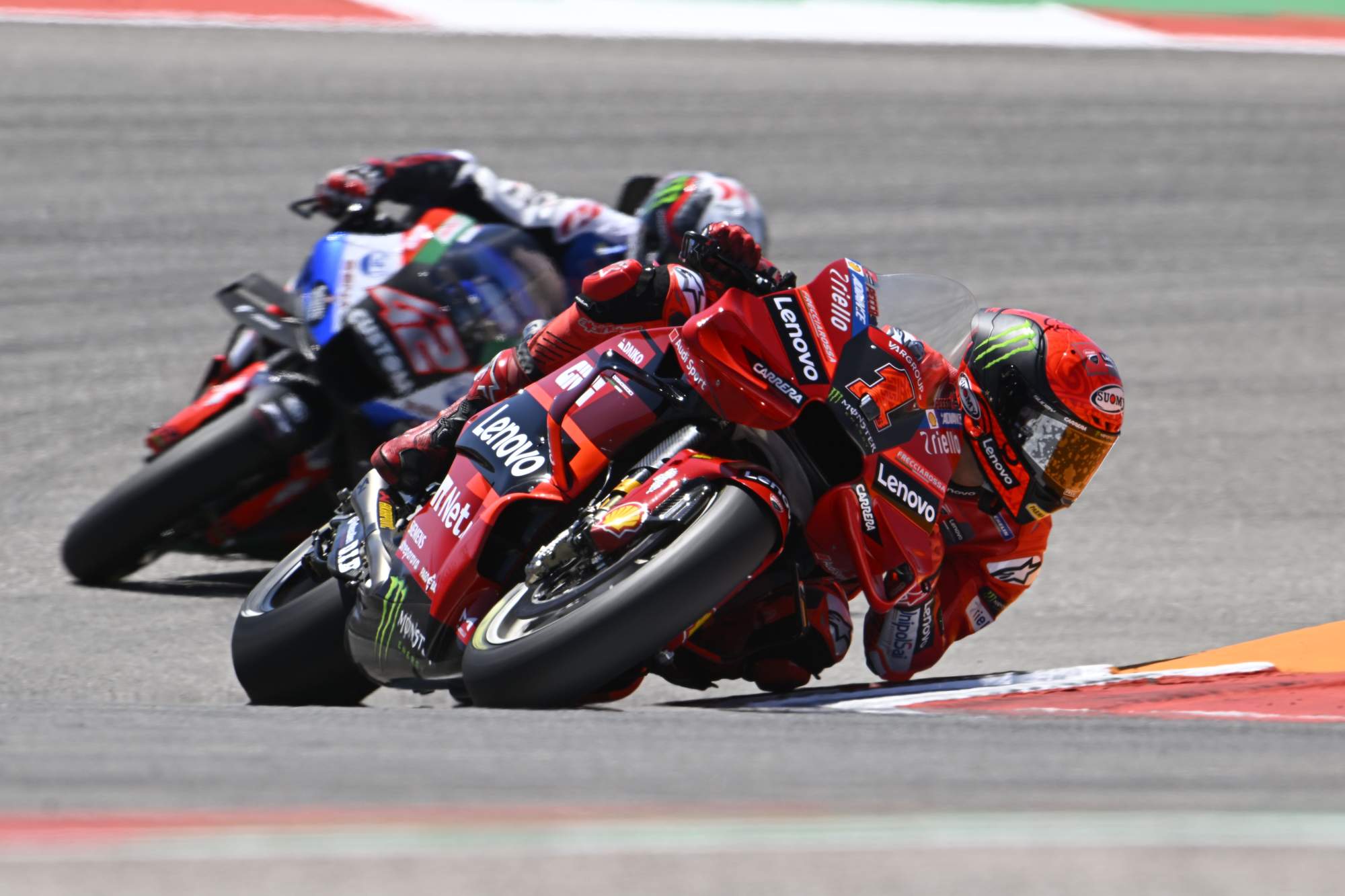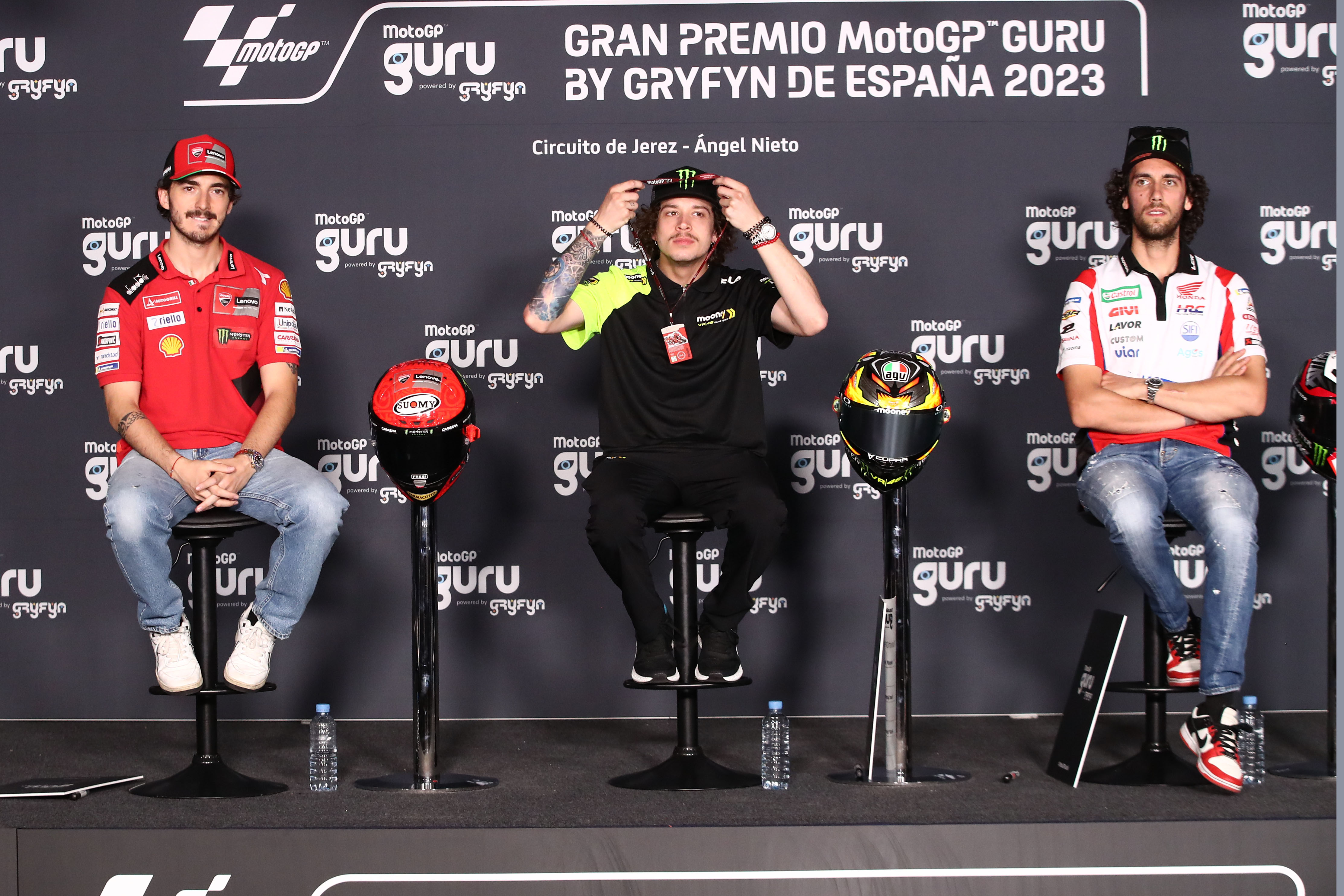Bagnaia in crash explanation u-turn ‘after seeing the data’
After taking a closer look at his COTA crash, MotoGP champion Pecco Bagnaia has hinted it’s more on him than Ducati to prevent a repeat

Reigning MotoGP world champion Pecco Bagnaia has conceded that his crash out of the lead at the last round of the championship was less an issue with his “incredible” Ducati and more to do with a lack of his own understanding of where exactly the limit was at a bumpy and hot Circuit of the Americas.
Bagnaia looked as fast in the early stages of the Texan race as he had en route to Saturday’s sprint victory, and was keeping eventual winner Alex Rins at bay until it all went very wrong for the factory Ducati rider.
Crashing out at Turn 2, he admitted afterwards that his initial explanation for the crash sounded “crazy”, as he put the blame not on himself but on a Desmosedici that is too stable and hard to get feedback from right now.

“We have the best bike on the grid. But then if you crash, and you don’t know why, it’s useless,” he said.
“I was going fast. But without taking any risk, without crazy things. I was entering very calm on Turn 2 because I was knowing that it was the most slippery. And I still crashed.”
But while his Ducati peers weren’t exactly dismissive of his theory, both Johann Zarco and Luca Marini pointed out that he was closer to the limit than fellow Desmosedici riders – with Marini specifically highlighting that Bagnaia was routinely much faster through Turn 2.
With the benefits of a week to think about what exactly had happened in the fall and the chance to properly analyse the data from it, Bagnaia’s initial theory seems to have shifted somewhat – and the Italian conceded ahead of this weekend’s Spanish Grand Prix that his pace might have had as much to do with it as the feedback from his bike.
“I think that after seeing the data,” he admitted in Jerez, “after checking everything, I maybe underestimated the condition in corner two.

“It was a corner where all weekend I was faster than all the other Ducatis. And I thought I would be fastest in the race in corner two, but maybe it wasn’t the condition there.”
And, when asked by The Race if that revelation means that the bike doesn’t quite need the work that he expected of it, he suggested that the biggest room for improvement lies less with the machine and more more with himself and how he goes about managing races.
“We are thinking about it,” he explained. “The potential of our bike has to be the same, it has to remain, it’s more that I have to understand more of the situation.
“After I said it, I spoke with my team, I spoke at home with my people. And sincerely tried to… it’s more difficult going two tenths slower by yourself than going two tenths slower by [a change in the] bike.
“But it’s better right now because if I had the potential and if I understand the situation like I did in Portimao or in the sprint race, you have an abundance. So it’s better to follow it like this and try to be more smart in some situations.”

